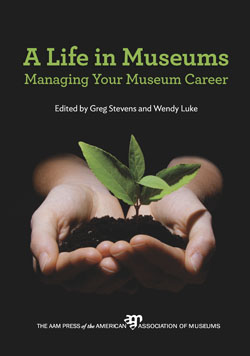Practically Speaking
Painted Picture - Wendy Luke
Occasionally you attend a session at an annual meeting, and you come away with an idea that impacts your life. This happened to me in 2010 when I heard entrepreneur and business coach Cameron Herold talk about his "painted picture."
In concept, the painted picture is a three-year snapshot of your life, your career, your business, your relationships, and your self. What’s magical about three years? It is long enough to make aspirations a reality and not so long that things become stale.
Listening to Herold inspired me to create my own painted picture. It is a detailed, high-level overview of my business and how my life will look and feel in three years. It covers what I really want in my life—experiences and accomplishments in many spheres, including professional, emotional, physical, in my relationships, my hobbies, and others. I review my painted picture regularly, and I’ve shared it with many people. Sharing my painted picture has been scary. What if people think I’m over-reaching? What if I don’t achieve my vision? What will my friends and colleagues think of me?
How to use your painted picture
My painted picture is a written narrative. Yours could be a collage of pictures/photos, a mind-map, or any format you are comfortable with. Your painted picture is valuable because it allows you to declare what you want, to yourself and others. As you think about it and share it, you increase the probability that you will make great things happen. By sharing your painted picture, you open up the possibility that people can help you achieve your vision.
Examples of elements that might be in your painted picture:
-
The job you will be in
-
What you have published
-
The quality of your relationships with friends
-
The quality of your relationships with family
-
The quality of your relationships with your spouse/significant other
-
With whom you collaborate
-
Your volunteer activity
-
The fulfillment you get from your hobbies
-
Your physical well-being
-
Your spiritual well-being
It took me some months to envision my painted picture. Some of it was drafted on the back of an envelope while traveling. Some of it came from lists of words I wrote on the computer. I shared the concept with a number of friends. It was helpful to me to tell people I was working on it. When I found myself running a tape in my mind that said, "Oh, you won’t be able to do that," I had a conversation in my mind that said, "Oh, yes you can." After a number of drafts, it seemed to me that it would never be perfect. And so it became my painted picture.
I'm not quite a year into my three-year painted picture. It's vivid. And it is becoming my reality.
Practically Speaking
The Kaizen Way to Performance Improvement - Wendy Luke
"Kaizen" is Japanese for "a small and important change." It is an example of a continuous improvement process used by organizations and career coaches to emphasize the value of implementing incremental change toward positive results.
Kaizen is a philosophy that can be used to help you look for a job, live a healthy life, or tackle a challenging project. It rests on the concept that if we take the small steps toward a goal, we are far more likely to reach it than if we take one or two large, life-disrupting steps. It’s an approach that eases the path to success.
Use Kaizen to Work Toward a Goal
You may already have a list of items that would help you improve your job performance. It probably includes things that frustrate you, like the need to waste less time. It may also include items that your manager has mentioned during a performance review, like the need to adhere to deadlines.
The first step in a kaizen is to identify the specific actions behind the problem. Identify the times of day when you are not performing productive tasks. What are you doing during those periods?
Let's say you spend time searching for documents in the piles of papers on your desk. A resolution to clean up your desk and keep it clean is far too big to accomplish in one step, so you put it off. Instead, use a kaizen approach: at the end of each day, spend just five minutes clearing your desk. Set the timer function on your computer. Suddenly, clearing your desk doesn't mean hours on a Saturday, working at a boring task. It’s just five minutes. Granted, your desk still has piles of paper, but there aren’t as many, and they are smaller. It’s faster now to go through the piles to find the documents you need.
Let's take a second example: a failure to meet deadlines. Like many people, you may miss deadlines in part because you don't manage your time well. Here again, kaizen can help. For example, your report on the recent family day program is due at the end of the week. Every time you sit down to start the report and write the summary paragraph, what you produce is not worth saving. And now, you have four days left before delivering the report to your director. A kaizen approach would be to skip the summary statement and write one sentence on the background section. Just one sentence. Later, you can write another sentence. In my experience, once I've written one to three sentences on a section of a report, the rest of the writing comes more easily.
Use Kaizen to Establish New Attitudes
Kaizen can also help you toward a more positive approach on the job:
- If you berate yourself with negative questions, ask: What is one thing I like about myself today? Write down your answer.
- If you are unhappy at work, ask: What kind of job could bring me pride and pleasure?
- To pay attention to others or to hear their voices, ask: Is there a person at work whose input I rarely get? What small question could I ask this person?
- If you have festering conflict with another person, ask: What’s one good thing about this person?
- If you feel pessimistic or negative, ask: What is one small thing that is special about me (or my organization)?
You cannot change the habits of years—much less a lifetime—overnight. Setting huge, complex goals or trying to change everything at once is a recipe for failure. Small steps get you to your goal far faster than do large steps that you may never take.



